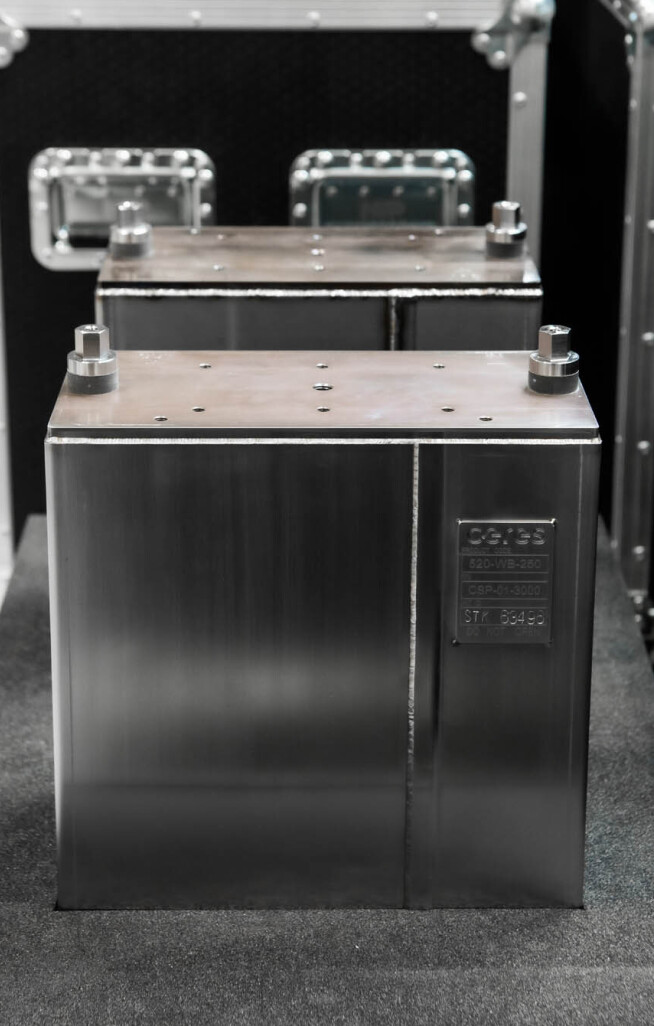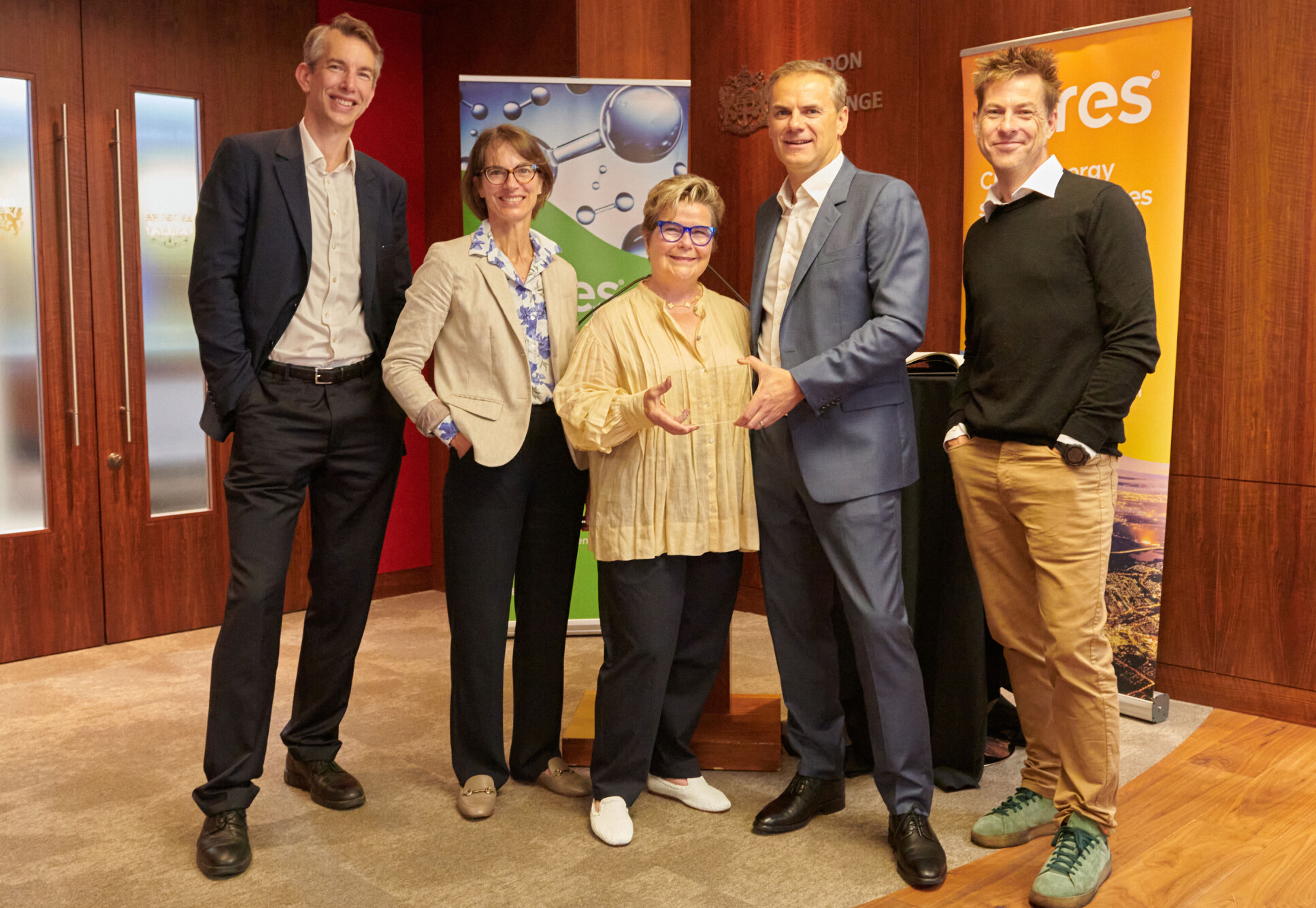Market debut is a red-letter day for Ceres Power
An energy technology company with its roots at Imperial has re-affirmed its commitment to London with a move to the LSE’s Main Market.
Ceres Power, an energy technology company created over 20 years ago from research carried out at Imperial, made its debut last week on the Main Market of the London Stock Exchange. Previously listed on the Exchange’s Alternative Investment Market (AIM), the move is a significant milestone in the company’s development.

“It allows us to attract new pools of investment, particularly from international investors, who really value the full listing,” said Phil Caldwell, the company’s chief executive. “And because of our progress and our size, we should gain indexation onto the FTSE 250.”
The move is also a vote of confidence in London as a centre for deep-tech companies, at a time when there have been high-profile moves to New York and other markets.
“I believe it’s important for the UK economy to see more tech businesses listed in London,” said Mr Caldwell. “We are proud at Ceres to be a leading example of a UK-based technology driving the global effort to tackle climate change and achieve net zero.”
The company was founded in 2000 to develop fuel cell research carried out by Professor Nigel Brandon, now Dean of Imperial’s Faculty of Engineering, and Professors Brian Steele, John Kilner and Alan Atkinson in the Department of Materials.
“It’s really great to see the company moving forward in this way,” said Professor Brandon. “When we set the company up out of Imperial College over 20 years ago, we were very excited about the technology and its potential impact, but I really do not think any of us saw just how significant this could really be.”
Green technology
Fuel cells consume substances such as natural gas or hydrogen in order to produce electricity, with low or zero carbon emissions depending on the fuel. They also produce zero particulate emissions, making them an inherently green energy technology.

Ceres Power uses advanced materials to build fuel cells that operate at moderate temperatures, generating electricity with high-efficiency and at low cost. This makes them accessible for a variety of applications, including transport, data centres, and combined heat and power systems for homes and businesses.
The same technology it uses to generate electricity can also be reversed, creating electrolysers that convert renewable energy into green hydrogen. This hydrogen can then be used as a fuel or to store the energy, buffering fluctuations in production from wind or solar power, for example.
The potential of this technology was recognised in June when Ceres Power was selected as one of three finalists for the 2023 MacRobert Award, the longest-running and most prestigious UK prize for engineering innovation.
“These Ceres technology electrolysers show the lowest conversion losses that I’ve come across,” said Professor Sir Richard Friend, chair of the MacRobert Award judges. “They are spectacularly efficient. That is a huge game changer for hydrogen generation.”
From AIM to Main
Ceres Power went public relatively early, joining AIM in 2003. This market is tailored to growing small and medium-sized companies that need to access capital in order to realise their potential. The Main Market, on the other hand, is for established companies, with bigger needs.
“Being on the Main Market opens a company up to much more capital,” explains Dr Brijesh Roy, Investment Manager at Imperial. “It’s essentially a big, global market place, whereas AIM is seen to be more for local technology companies.”

The Main Market also makes more regulatory and reporting demands on a company. Being able to meet those demands sends a signal to potential investors. “This says something about the maturity of the company, the sophistication of its operation, and its ability to engage with investors and financiers,” says Dr Roy.
For Professor Brandon, the move marks both the growth of the company and the changing business context. “It speaks to both the maturity of the technology and the commercial partnerships that are in place, and the fact that increased focus on de-carbonisation globally is driving the need for clean efficient and flexible technologies such as those developed by Ceres Power,” he said.
He also paid tribute to staff members, past and present, who have built up the company. “Ceres Power is at a far larger scale that I think any of us envisaged when we set it up,” he said. “I can only recognise and thank the hundreds of people at the company over the past 23 years who have done outstanding work to exceed our ambitions.”
Take action for impact
This moment in Ceres’ story also has a significance for Imperial. “I believe it reinforces the impact that academic ideas and innovation can have, and the importance of taking action to realise this,” Professor Brandon said. “It also highlights that delivering impact in these deep-tech areas takes time, money and people, and we should not forget that.”

His own experience as co-founder of Ceres Power, and its first chief scientist, was a positive one. “I have really enjoyed and learnt a lot from the whole spinout experience, and indeed now have another spin-out, RFC Power, in partnership with my colleague Professor Anthony Kucernak in Chemistry,” he said.
The two spinouts have gone on to work together, with Ceres supporting the development and validation RFC Power’s core flow battery technology.
“I would certainly encourage colleagues with ideas they think could have impact to consider how to best realise this,” Professor Brandon concluded. “Spin-outs are one such route, but of course so is licensing, and so are industrial partnerships. What I love about Imperial is that this focus on impact sits at the heart of our DNA.”
The College has an extensive enterprising ecosystem that can support academics interested in developing this aspect of their research. This ranges from spaces for discovery and prototyping, through mentoring and support in forming a startup, right up to company incubation facilities. Support is also available for building research partnerships with industry and technology licensing.
Main images courtesey of Ceres Power
Article text (excluding photos or graphics) © Imperial College London.
Photos and graphics subject to third party copyright used with permission or © Imperial College London.